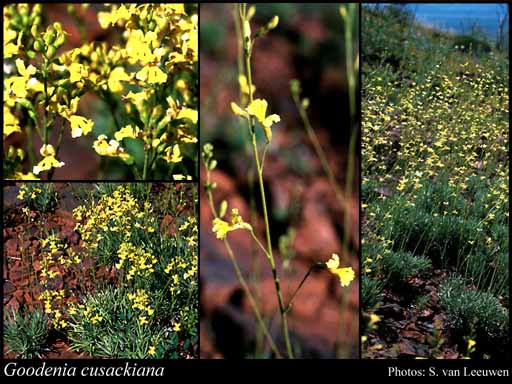- Reference
- Telopea 3: 556 (1990)
- Conservation Code
- Not threatened
- Naturalised Status
- Native to Western Australia
- Name Status
- Current
Erect to spreading, semi-woody perennial, herb, 0.05-0.6 m high, forming colonies to 1 m wide; with hairy leaves. Fl. yellow, Jul to Sep. Sand, stony loam. Rocky hillside, gorges, undulating plains.

Scientific Description
Stems ribbed or unribbed. Leaves flat, 30-70 mm long, 2-4 mm wide, Indumentum present, with dense, simple hairs; margins entire. Bracteoles absent. Pedicel pedicellate, Pedicel length the pedicels 3-10 mm long, glabrous. Calyx lobes present, Calyx length 3-4 mm long, hairy, with dense, simple hairs. Corolla yellow, 12-15 mm long, without auricles, not spurred, hairy on the outside, with dense or sparse, simple hairs, glabrous on the inside; central lobes 3-5 mm long, with wings; outer lobes 5.5-7 mm long, wing present on both sides and clearly unequal, 0.8-1 mm wide on the narrower side, 1.2-1.5 mm wide on the broader side. Anthers free. Ovary inferior, not gibbose; style 4-6 mm long, hairy; indusium single, hairy; ovules more than two. Flowers in July, August and September. Occurs in the Pilbara (PIL) and Carnarvon (CAR) IBRA Region(s), of the Eremaean (E) Botanical Province.
Distribution
- IBRA Regions
- Carnarvon, Pilbara.
- IBRA Subregions
- Cape Range, Chichester, Fortescue, Hamersley.
- Local Government Areas (LGAs)
- Ashburton, Carnarvon, East Pilbara, Exmouth, Meekatharra.